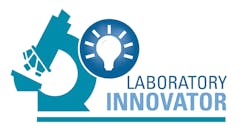The laboratory industry has experienced tremendous change in the past few years. New compliance obligations and continued fee compression place an economic burden on many labs. In an attempt to save money, some labs—in particular those associated with hospitals and health systems—are using an enterprise revenue cycle management (RCM) module that is offered as part of the hospital’s electronic health record (EHR) software. This article explores what lab leaders need to consider when it comes to the capabilities of enterprise RCM systems vs. those purpose-built for laboratories. The health system may feel the enterprise RCM system is the most cost-effective option, but that fails to take into account the specific needs of the laboratory to maximize its revenue contribution and effectively manage compliance risk.
Compliance
The increasing complexity of compliance obligations for laboratories can seem unsustainable. In the first PAMA (Protecting Access to Medicare Act) data reporting period, few hospital labs were required to report. The definition of applicable lab has been adjusted, so many hospital lab leaders should be collecting the required data and preparing to deliver an accurate dataset during this second reporting period.
Although the definition of applicable lab has been modified, it’s still unclear how many hospital labs will be required to report. Nor is it well-understood whether the additional data will have a meaningful impact. It is also unknown whether hospital labs will be able to successfully distinguish outreach data from outpatient data, as is required. According to the American Hospital Association, it is a significant burden on hospitals to effectively distinguish this data and is especially difficult if the lab is using the hospital’s enterprise RCM system, as the level of detail required for PAMA reporting is often not collected.
To properly support compliance requirements, labs need RCM and financial management technology that not only helps improve cash collections, but delivers visibility into and control over financial operations. Optimizing billing and accounts receivable processes, intelligently automating workflow, facilitating claim and appeal filing, and removing clerical decision making also reduce regulatory compliance risk.
Payor billing rule changes
The most extensive change to payor billing rules of late is related to the Eliminating Kickbacks in Recovery Act of 2018 (EKRA). The Substance Use-Disorder Prevention that Promotes Opioid Recovery and Treatment for Patients and Communities Act (SUPPORT Act) is intended to address the national opioid crisis. EKRA, one of its accompanying bills, however, has potential impact on many laboratories, including hospitals that provide no services related to substance abuse treatment.
There are things that laboratories can do within their billing and RCM processes to help with EKRA compliance. For example, laboratories need to review policies related to writing off co-pays and deductibles. Under EKRA, it is now a federal felony to write-off these patient responsibility balances as a standard of practice for private payors, as it already is under Medicare. This can be extremely difficult to do with an enterprise RCM, not designed specifically for laboratories.
For example, when a lab offers waivers and discounts, these cannot be fixed amounts, nor have a stated upper limit. It cannot be a one-size-fits-all approach. There needs to be bona fide financial assistance counseling for each patient and attempts need to be made to collect on any balances due. This is especially relevant for hospitals using an enterprise RCM. Because the average in-patient invoice is dramatically higher than the typical outreach lab invoice, there is a tendency for many hospitals to allocate their collection resources toward the higher value balances, and therefore, smaller lab-based balances tend to be written-off.
A purpose-built lab RCM solution provider, with lab-specific operational expertise, can advise you on mitigating the impact of EKRA by optimizing reimbursements and pursuing a secondary payor strategy to further reduce the patient out-of-pocket. In addition, the purpose-built solution provider can also advise on taking the best advantage of an organization’s data to formulate a strategy for maximizing the organization’s “in-network” footprint.
Data visibility
Another impact of running a lab on an enterprise RCM system is that typical enterprise RCM systems do not provide the data visibility required to effectively operate a lab. Purpose-built RCM systems for laboratories use web services to deliver capabilities and information wherever they are needed across the system, including connections with patients and clients through portals as well as interoperating with external systems. The best web services for labs have HIPAA and internet security protocols built in. It is also essential for labs that these two-way data exchanges operate in real time, removing redundancies and data latency.
The information held within lab billing and information systems is useful and powerful. Diagnostic services influence most medical and therapeutic decisions, and the data from the patient’s medical record, most relevant for optimizing care, is also diagnostic data. Labs need to leverage these important data assets, but if they are using enterprise RCM systems, they may not be able to fully access, visualize, and thereby benefit from this valuable information.
Data visibility is truly essential, yet just as important are the analytics to help make the data actionable. Analytics help an organization leverage its data assets to understand how the lab is operating, by payor, by specialty, by test, by territory, etc. Analytics also help lab leaders better understand the business they earn from each referring physician. This helps identify opportunities for increasing the value of the relationship. There is also tremendous value to this data beyond the billing department. Clinical data is a treasure trove for analyzing and improving population health.
Business intelligence
Hospital outreach, outpatient, and other diagnostic labs have specific business intelligence (BI) needs that cannot be met by most enterprise RCM systems. Data on the efficiency and effectiveness of lab operations are essential. It is also critical to have fast access to reporting and analytics without impact to production system performance.
Some of the most important BI components and capabilities for labs include:
- Dashboards: view information summaries with ease, and drill down for further detail, if necessary.
- Auditable: ensure data integrity and GAAP/Sarbanes-Oxley compliance. Easily address PAMA and FASB 606 accounting requirements.
- Benchmarking: provide metrics that enable tracking and compare the organization’s financial and operational performance to your industry peer group.
- Key performance indicators: use data to understand trends and establish and track key performance indicators.
- Drill-through data: view contextual details related to the data elements by drilling up/down in the summary reports.
- Ad hoc reporting: enable end users to easily build his/her own reports.
Precision medicine
As the healthcare industry continues to adopt precision medicine approaches, labs need informatics technology to integrate clinical, diagnostic, and financial data to enable care teams to gain better insight into the patient’s medical situation, make better diagnostic and therapeutic decisions, and improve outcomes. Frankly, this is something that most enterprise RCM systems just cannot do. They are not designed to improve the efficiency of patient care coordination, deliver data visibility or quality metrics reporting for reimbursement, nor to effectively discover actionable insights.
The advancement of precision data creates more complex tests and thus more complex billing. It tends to result in more rejected claims, and thus more appeals. The appeal process can be challenging for labs using an enterprise RCM system, since access to and the attachment of the data needed for a successful appeal is not automated. This results in manual intervention, which is costly and opens the laboratory up to new risks—including compliance risk.
Lab-specific RCM solutions provide more value
In short, enterprise RCM systems just don’t have many of the capabilities required for labs. We see hospital outreach labs struggling to use the hospital system. From a compliance perspective, in today’s environment where new regulatory and payor requirements are being introduced regularly, making a commitment to compliance and obtaining the technology solutions that an organization can rely on to proactively support their compliance needs and programs are imperative. Otherwise the risk is just too great, and it is even harder for hospital outreach labs to succeed.
Too often hospital and health system lab administrators have enterprise RCM systems pushed on them in a misguided attempt to save money. They are told the enterprise system will meet the lab’s needs and comes bundled with the cost of the hospital or health system software. Unfortunately, what comes with the enterprise RCM system is the potential for compliance risk, additional labor costs to create the “work-arounds” the lab needs, and sub-par capabilities that fail to maximize reimbursement for the highly valuable work the lab performs. These labs leave over half their potential profit margin uncollected, because the cost to collect is too high. Only laboratory-specific automation can cost-effectively maximize both AR collections and profitability.
Lab leaders need to rationalize data strategies with business strategies. A lab-specific RCM system can go a long way to making this happen. Value-based pricing is dependent upon the ability to demonstrate financial and economic benefit, which is not possible in an enterprise system. Without leaders focused on technology, data, and strategy alignment, it will be challenging to thrive in today’s environment of reimbursement compression and increased regulation.





